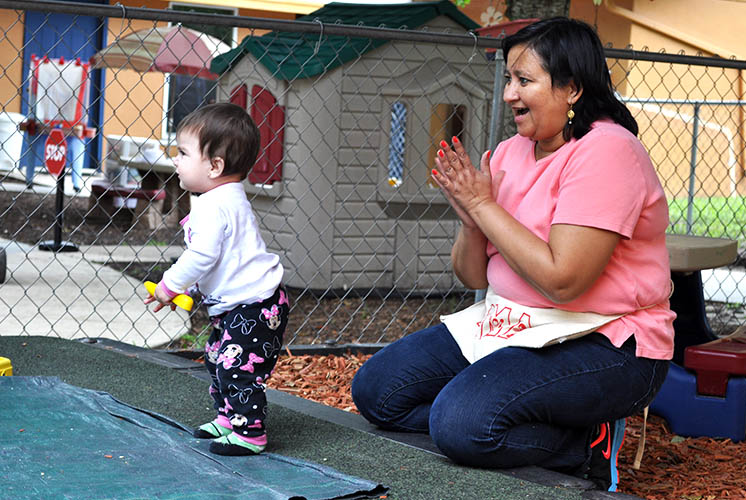Fourteen-month-old Clarence crawls up the side of a gently sloping, grass-covered hill. He stops twice along the way to pull up the grass and throw it up in the air. He watches intently as the wind carries the blades of grass off into the sky. When he gets to the top, he slowly stands up and glances over at his teacher, Angie. She walks over to him and extends her hand. Believing Clarence can physically manage to come down the hill but may need reassurance, Angie smiles and asks, "Are you ready to come down the hill?" Clarence reaches out and grabs Angie's hand. He looks down and takes one careful step forward. He looks up at Angie. She continues to smile and encourages him, "That's it. You're walking down the hill." Clarence holds Angie's hand and slowly makes his way down. Angie claps and says, "You did it! You walked down the hill!" Clarence squeals and claps his hands.
 Outdoor play and exploration matter to infants and toddlers. Time spent outdoors helps them begin to connect with and develop an appreciation for the natural environment. It offers important health and developmental benefits and valuable experiences that are simply not available indoors. With thoughtful planning and supportive practices and policies, programs can provide infants and toddlers with opportunities for active outdoor play, nature exploration, and connections with trusted adults in many ways, even in circumstances that are less than ideal. Working together, EHS and MSHS leaders, staff, and families can offer rich learning opportunities that support children's development and build a foundation for engaging with and learning from nature.
Outdoor play and exploration matter to infants and toddlers. Time spent outdoors helps them begin to connect with and develop an appreciation for the natural environment. It offers important health and developmental benefits and valuable experiences that are simply not available indoors. With thoughtful planning and supportive practices and policies, programs can provide infants and toddlers with opportunities for active outdoor play, nature exploration, and connections with trusted adults in many ways, even in circumstances that are less than ideal. Working together, EHS and MSHS leaders, staff, and families can offer rich learning opportunities that support children's development and build a foundation for engaging with and learning from nature.
Read more:
Resource Type: Article
National Centers: Early Childhood Development, Teaching and Learning
Last Updated: November 27, 2019
